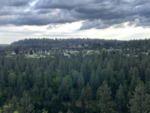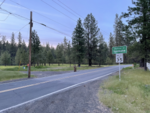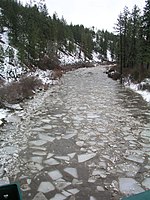John A. Finch Arboretum

John A. Finch Arboretum 56.65 acres (22.93 ha) is a public arboretum located at West 3404 Woodland Boulevard, Spokane, Washington, United States in the West Hills neighborhood. It is open daily without charge. Dogs are not allowed at the arboretum.The arboretum was established in 1949 after the last living executor of the John A. Finch estate released $250,000 for the purpose. The landscape follows Garden Springs Creek, and now contains about 2,000 trees and shrubs, including 65 groups of lilacs, as well as a rhododendron grove, conifer and maple collections, and a nature trail. The arboretum lies in a small valley running southwest-to-northeast carved by the creek. I-90 and the Sunset Highway, which use the valley to descend into Spokane from the higher elevation of the Columbia Plateau, respectively form the southern and northern borders of the park. The arboretum is home to the Touch and See Nature Trail, which is owned by the Girl Scout council in the area. It was refurbished by Darlea Chatburn in 2004 who received her Gold Award after the completion of the project.
Excerpt from the Wikipedia article John A. Finch Arboretum (License: CC BY-SA 3.0, Authors, Images).John A. Finch Arboretum
Touch and See Nature Trail, Spokane
Geographical coordinates (GPS) Address Nearby Places Show on map
Geographical coordinates (GPS)
| Latitude | Longitude |
|---|---|
| N 47.640975 ° | E -117.46695277778 ° |
Address
Mullein
Touch and See Nature Trail
99224 Spokane
Washington, United States
Open on Google Maps










